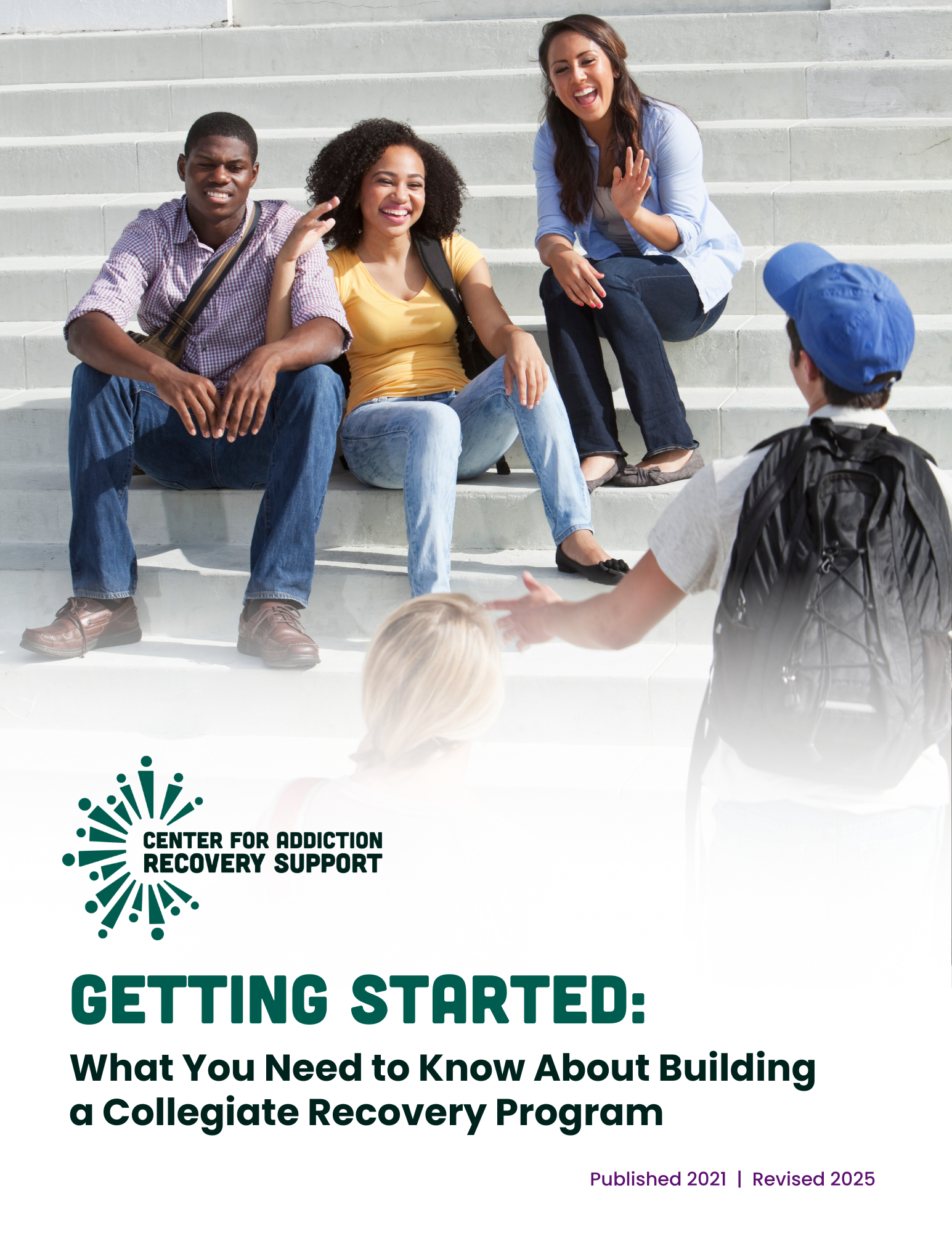Starting a Collegiate Recovery Program
GETTING STARTED WITH A CRP

Fill out a Technical Assistance and Training (TTA) Request through the Center for Addiction Recovery Support and indicate “Collegiate Recovery” as your interest topic area so we can help you get started! Learn more about Technical Assistance with ARHE here. Learn more about CARS here.
Collegiate recovery has a rich and fresh history with founding programs starting as early as 1977 and 1986. Early programs led the way so that many collegiate recovery communities (CRCs) and collegiate recovery programs (CRPs) could adopt and adapt their models for their own campuses. The collegiate recovery field has experienced marked growth since 2010 and gained national recognition when the Office on National Drug Control Policy released a call to-action statement in 2018 for all Institutions of Higher Learning to disseminate recovery support and resources to their students. Institutions of Higher Education have a responsibility to support students in recovery so that they can continue to grow, develop, and fulfill their academic and adult potential.
Starting a CRP can seem like a daunting task, especially in the beginning stages. The best place to start is exactly where you are! Because this is such an exciting concept, it may be tempting to jump right to the “big” ideas such as recovery housing. It is important to have a vision and long-term goals, and it is even more important to have a plan. The plan should start with meeting the current needs of the students on your campus while also looking to the future for how you will continue to grow services that align with the availability of resources over time.
ARHE, in partnership with the Independence Blue Cross Foundation, published a guide in 2020 to help you get started with building a CRP on your campus. This document is intended to help you get started in your planning process. Since every campus has its own unique culture, this document is not intended to be a step-by-step how-to guide, but rather it is something every school can adapt in its own way in order to meet the needs of students in recovery on that campus.
This guide offers a comprehensive roadmap for building and sustaining collegiate recovery programs (CRPs) across a wide range of campus settings. Getting Started: What You Need to Know About Building a Collegiate Recovery Program highlights the critical role of peer support, institutional commitment, and culturally responsive recovery spaces in supporting student success.
In partnership with the Center for Addiction Recovery Support (CARS), this updated 2025 edition includes insights, strategies, and a new addendum tailored to the unique needs of community colleges and technical schools—reinforcing our shared vision of recovery-ready campuses nationwide.
PLANTING THE SEED
Collegiate Recovery Programs are becoming more and more widespread nationwide, and every single one of them started in a slightly different way. Some started out as a student organization, others came out of Counseling Offices, and still others from Residential Life. As they have grown in popularity and demand, they are becoming more and more of a household name. Consequently, there is a good chance that your institution may already have the idea to begin one. If not, there are several places that are good starting points to begin the conversation.
- President’s Office
- Dean of Students Offices
- Counseling & Psychiatry Offices
- Health & Wellness Offices
- Residential Life Office
- Dean’s Office in academic colleges that house education dedicated to addiction, recovery, social work, counseling, psychology, etc.
- Student Organization/Student Government
Getting one of these offices interested in furthering the cause often comes from hearing stories of how Collegiate Recovery Programs are fostering healthy environments, supportive communities, and assisting students to thrive in the recovery-hostile environment of college.
In order for a Collegiate Recovery Program to develop within a college or university, it needs to have buy-in from major stakeholders within the institution. In addition to the tales of students’ challenges with sobriety, and stories of success due to collegiate recovery communities and programs, it’s helpful when you are pitching the idea, to incorporate the values of the institution. Describe how a collegiate recovery program is in alignment with the school’s mission, vision, or any foundational framework the school relies upon to dictate its values. Demonstrating how a collegiate recovery program and community compliment and supplement these institutional underpinnings will be helpful towards moving it forward.
Providing information to these major stakeholders about the current research and data available on schools that have Collegiate Recovery Programs, student success, retention, GPAs, graduation rates, relapse rates, etc. can help support those within the institution who are fighting for the development of a collegiate recovery program.
These days most schools are looking for ways to increase income. If you are able to fundraise to build incentive and the awareness that Collegiate Recovery is worth investing in, this can go a long way towards seeing a program to fruition and sustainability. Build a relationship with your school’s development office in order to develop a strategy that will work best for your program.
If you’ve gotten to the point where the administration has bought into the idea of collegiate recovery, and has the money ready to invest, then CONGRATULATIONS! Great job! But now you’re looking to help them develop the actual program. The Association of Recovery in Higher Education can help. Networking with other collegiate recovery professionals can can offer an array of experiences and ideas for you to utilize while building your program. Check out the Resource Hub section of this website for ideas as well!
